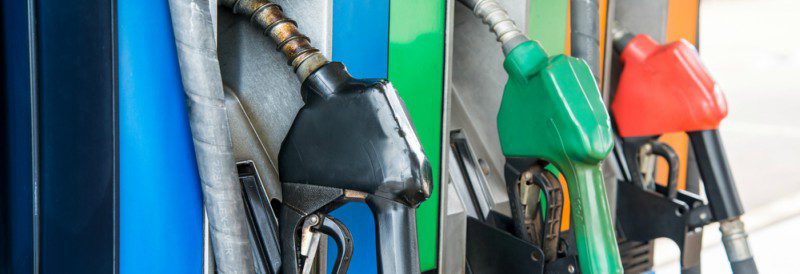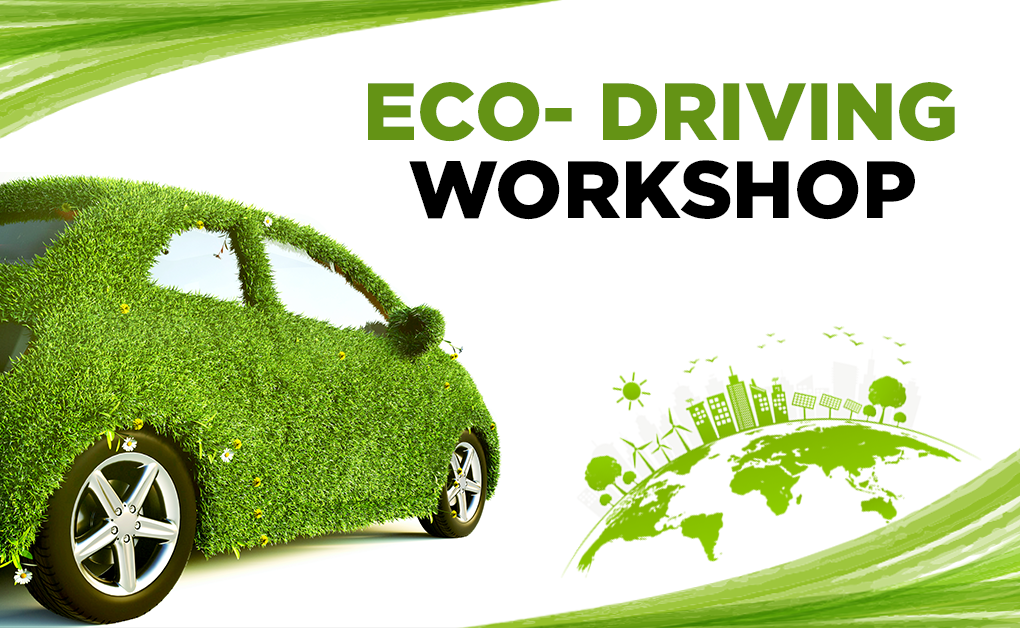With world climate patterns becoming increasingly unstable from just 100 years of man-made pollution, what part can the individual car owner play in cleaning up our planet? Well, manufacturers are actively introducing ‘green’ cars to the public that are propelled by various technologies and we are certainly going to see more of these in showrooms over the coming decade. The Highway looks at which of these models will soon be available in Singapore and where alternative fuels and hybrid engines are heading.
The Future is here
Cars that are kinder to the environment and your fuel bills are no longer the stuff of fantasy. Here are four models that will be on our streets this year.
Lexus RX400h
This luxury Sports Utility Vehicle (SUV) combines a 3.3-litre V6 petrol engine with not one, but two electric motors for a combined power output of 269bhp. Lexus says this is a match for a normal 4.0-litre engine (hence the car’s model name), but the car offers significant improvements in emissions and fuel economy.
It’s pretty lively too, as the 0-100kmh time of 7.6 seconds (compared to the standard RX300’s 9.0 seconds) shows.
The car can run on its electric motors alone at low speeds, cutting exhaust emissions to zero. During normal driving, a power split device apportions output from the engine between driving the wheels and powering the generator, which in turn charges the battery.
Energy is also gained during deceleration with the motors operating as generators to recover kinetic energy that would otherwise be lost as heat, and storing it as electricity in the battery.
Externally, the RX400h fairly looks similar to the RX300, save for the revised front grille that aids cooling of the Hybrid Synergy Drive system under the hood. Expect to see the car in local showrooms in the last quarter of this year.
Toyota Prius
The first-generation Prius had as much visual appeal as a month-old loaf of bread, but its replacement, introduced in 2003, is a real head-turner from all angles. It’s not cheap, but it’s an amazing piece of engineering that works simply because it demands no compromises whatsoever from its owner.
It is spacious and brisk enough to be entertaining, plus it never needs to be plugged in. A large LCD screen on the dashboard provides real-time updates on how much power the car is drawing from its petrol engine and electric motor, and how much the batteries are being charged. This display is a wonderful conversation piece and it gives the driver the reassurance that he is doing his part in saving the planet.
A particularly neat trick is the Prius’ ability to run only on its electric motor, just like the RX400h. Push the ‘EV’ button next to the steering wheel and you can cruise noiselessly at speeds of up to 50kmh for a few minutes until the battery needs to be recharged again.
Local Toyota distributor Borneo Motors is still undecided about selling the Prius here because it will cost significantly more than a Corolla. We think it shouldn’t worry, though – there will be no shortage of buyers willing to pay a premium for this super- cool car.
Mercedes-Benz E 200 NGT
NGT stands for Natural Gas Technology and the badge on this car’s bootlid is one of only two external giveaways that it’s not a standard petrol-powered E 200 Kompressor. The other is the larger fuel flap that hides two refuelling nozzles – one for petrol and the other for Compressed Natural Gas (CNG).
The first NGTs are already running on local roads in taxi fleets but there are plans in place to offer the car to private buyers in the future. It makes a huge amount of sense because the 1.8-litre engine delivers identical performance no matter which fuel is used, and with CNG costing significantly less than petrol, owners stand to cut running costs whenever they top up the tanks.
There is, however, one catch – the only CNG filling station in Singapore is located on Jurong Island – a restricted area. No matter, for buyers can always just top up with petrol until the CNG refuelling infrastructure is better developed here. The best bit? With the latest green car rebates, the NGT might even cost less to buy than the standard E 200 Kompressor, something every bargain-loving Singaporean buyer can appreciate.
Honda Civic Hybrid
Local motorists would be familiar with the first-generation Civic Hybrid, which was the model of choice for the Honda Diracc car sharing scheme. This new model is based on the all-new Civic and comes with an improved 1.3-litre engine hooked up to Honda’s IMA (Integrated Motor Assist) system. The set-up delivers 20 percent more power and a five percent improvement in fuel economy compared to the previous version.
The car is significantly more spacious and better equipped than its predecessor and a thoroughly revised rear suspension system is said to have cured the poor ride quality that plagued the old model.
Unlike Toyota’s hybrid models, the Civic never runs solely on the electric motor, although its engine also shuts down when the car is stationary to save fuel. To further improve economy, the Civic Hybrid’s aerodynamics have been optimised – custom-designed light alloy wheels and spoilers front and rear help to smoothen the airflow over the car.
Local Honda distributor Kah Motor expects stocks of the Civic Hybrid to arrive in the second quarter of this year and there’s talk of very competitive pricing in the mid-$80K range. This is likely to make the car the most affordable hybrid model in Singapore.
Charge of the high-performance hybrids
Don’t for a moment think that all this talk about low emissions and good fuel consumption figures means that hybrid cars serve up as much driver appeal as they spew toxic gases from their tailpipes. Over the next few years, carmakers will also use the technology to focus on improving outright performance. The BMW Group, for instance, recently signed a memorandum of understanding with DaimlerChrysler and General Motors governing the formation of an alliance of equals for the development of hybrid drive systems. BMW chairman Helmut Panke has said that his company would never compromise on performance, handling and driving pleasure, so you can bet BMW’s hybrid will still bring a smile to an enthusiast’s face. When Lexus’ new LS is launched later this year, the range-topping model will be the LS600h that mates a 5.0-litre V8 to a powerful electric motor. As the model name suggests, you can expect the car to offer the performance of a good 6.0-litre engine. Even Porsche has said it will build a hybrid version of its Cayenne SUV by the end of this decade. This will maintain the car’s driving dynamics while cutting fuel consumption by around 15 percent. And if one of the most profitable carmakers in the world is going hybrid, it must indicate that the technology has a very bright future ahead.
Choosing your greens
Hybrid, hydrogen, natural gas or diesel? What makes these cars ‘green’ and which is the way to go?
With fuel prices steadily headed for the stratosphere, even the most hard- nosed of motor industry execs must recognise that giant SUVs with even larger appetites for fossil fuels aren’t the way of the future. The commonly acknowledged solution to future energy needs is hydrogen, but the technology required to produce and use it cost-effectively, as well as the infrastructure to distribute it all do not as yet exist. What we know of today as ‘green cars’ still constitute an interim solution.
While green cars are more common in the West, it’s only now, however, that alternatives to petrol guzzlers are being seriously considered here.
Green vehicles are basically cars that have low emissions, and high fuel efficiencies. Interestingly, these objectives can be met with a variety of technologies. However, each comes with their pros and cons. Here are some of the applications that can be found locally:
HYBRIDS
Hybrids are the sort of green cars that we’re likely to see more of here, given the Government’s recent doubling of the Green Vehicle Rebates. Hybrids typically use a petrol engine in tandem with electric motors, in order to make use of both sorts of propulsion systems in the most efficient way.
Petrol engines function very efficiently at expressway speeds, while electric motors develop their maximum torque from virtually standstill. Hybrids use electric motors to augment acceleration to expressway speeds, and then allow the petrol engine to take over, and in the process recharging the batteries that power the electric motors.
More sophisticated hybrids even use regenerative braking, whereby the energy created during the braking process is converted back into electricity.
Pros: As their petrol engines only come on when necessary, exhaust emissions are dramatically reduced Cons: Although much more fuel efficient than conventionally-powered cars, the technology is at best, a stop-gap measure to prolonging the availability of fossil fuels.
NATURAL GAS
Vehicles powered by Compressed Natural Gas or CNG are fairly commonplace overseas. Taxis and buses in particular tend to use this fuel quite extensively. CNG is cheap and fairly abundant, and, provided you get the right grade, burns very cleanly.
The best thing is that a conventional petrol engine can be made to burn CNG with little effort. Bi-fuel cars do just that, using CNG in conjunction with petrol, and can seamlessly switch between the two.
Pros: CNG is a more affordable and cleaner energy source
Cons: Availability of CNG pumps will have to be dramatically improved for this technology to take off. A lack of variety of CNG-powered cars also contributes to this “chicken and egg” conundrum.
HYDROGEN
This is the holy grail of alternative fuel research. However at the moment, hydrogen is far too costly to produce to be as economically viable as petrol or diesel. This is mainly because the methods used to produce hydrogen at the moment require more energy than that which can be released by the resultant hydrogen itself.
How hydrogen might be used in cars in the future is likely to involve the fuel cell. Fuel cells work via an electrochemical process, passing hydrogen gas over a special membrane that generates electricity, which is then used to power electric motors. Singapore is host to the recent trial of Mercedes-Benz’s fuel cell powered A-Class cars and results so far look promising, although a commercially viable hydrogen car is still very far off. However, governments and manufacturers are working towards overcoming these problems, and hopefully, the next 50 years or so will usher in the hydrogen age.
Pros: The virtually endless supply of hydrogen means that we can still keep driving long after the world has run our of oil. No global warming gases to worry about, just water vapour as a by-product.
Cons: Hydrogen is still expensive to produce and fuel cell cars are still a long way from being affordable
DIESEL
The diesel option might be curious to some, given our experience with smoky buses, taxis and goods vehicles, but the truth is that modern diesels are as far removed from the latter examples as you can imagine. The latest models boast state-of the-art direct injection and turbocharging technology, and produce mountainous quantities of torque.
Torque is basically what causes you to feel that shove from the back as you accelerate, horsepower, in reality a much more esoteric quantity, is simply a function of torque and engine speed. And diesels generate torque figures that, on equal displacement, petrol engines can’t hope to match.
In addition, today’s diesels are as clean as they are powerful. With the latest particulate filters, the exhaust from a diesel engine can actually be cleaner than the air that goes into it!
And you don’t have to get it from oil-producing countries, either. In developing countries, or where there is a suitable agricultural base, diesel can be manufactured. Biodiesel as it is called, simply requires raw organic material, something that most developing countries with largely agrarian based economies have in abundance, and a special reactor. Biodiesel is one way to help developing countries avoid having to pay crippling amounts to buy oil from overseas.
Pros: Better performance but more frugal than petrol powered cars
Cons: The current local diesel tax structure for privately registered cars negates any cost saving benefits.
WELL-OILED MACHINE: life with a diesel
Many countries, especially those in Europe, are turning to diesel power as a more fuel-efficient means of transport. We try one for size to see if it really is all they make it out to be.
Many of us might associate diesel power with noisy, smoky taxis, but a brief taste of a modern turbodiesel is enough to make anyone realise that there are some desirable oil-burners out there.
But brief tastes are barely able to give you an idea of underlying substance, so to find out if a modern diesel car offers a genuinely appealing alternative to the petrol mainstream, The Highway recently – and exclusively – took a Mercedes-Benz C 320 CDI Estate for a drive.
More than a drive, in fact, for we spent six days with the car to find out if diesel power is an empty promise.
As far as modern diesels go, the Merc’s C 320 CDI is about as good as it gets. The engine is a 3.0-litre V6 turbo whose maximum power is a tasty 224bhp, and it arrives at just 3,800 rpm. Incredibly, the diesel engine’s peak torque output is 510Nm, and it’s achieved at – all of 1,600rpm. Put into perspective, you’ll need to look towards the C-class’ most potent variant, the 367bhp C 55 AMG for that sort of twist action from a petrol-powered car.
As you’d expect, then, the acceleration’s fairly forceful. 0 to 100kmh in 7.1 seconds might not sound scintillating, but there’s enough muscle here to chirp the rear wheels on a dry road if you’re in the mood. In a more practical vein, it’s also possible to potter around town with just a feather’s weight on the throttle.
The C 320 CDI comes with Mercedes’ seven-speed auto, but the diesel is so torquey that you get the idea it would work just as well with a three-speeder. The pick-up’s healthy at all times, but supercar-rivalling bursts of acceleration are never more than a throttle stomp away.
Compromises? The V6 is a smooth-revving device, but it’s nowhere near as quiet as a petrol engine. There’s a noticeable low-frequency roar from the engine, especially when it’s cold, and while it doesn’t clatter like a taxi outside, you’ll know just by listening that it’s a diesel.
And that’s about it, really. It’s a seriously good machine, and that’s before you consider the fuel efficiency. Mercedes-Benz says it’ll do 100km on 7.6 litres of diesel. We managed a slightly embarrassing 9.6L/100km, but only because the engine’s performance and the C-Class’ inherent nimbleness encouraged nothing but spirited driving.
Nevertheless, that means the 330km we covered would have cost us just $31.51 of diesel in Singapore*. Using Merc’s official figures, a full tank of 62 litres is theoretically good for 815km, at a cost of $59.71.
The same distance in a C 280 Estate would cost you $121.77** in 95 Octane petrol. Which would you rather live with?
* at $0.963 per litre before discount
** at $1.507 per litre before discount











